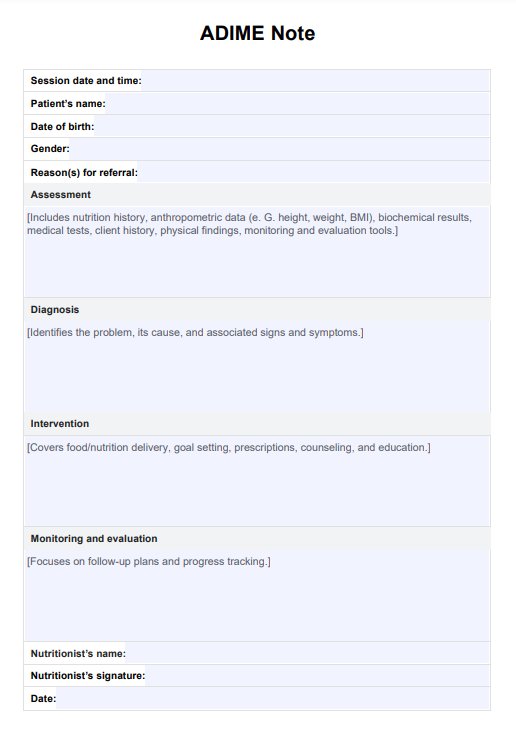There are many different ways of formatting an ADIME note. Some formats separate Monitoring and Evaluation into two separate sections, and some include subheadings in each section. We have kept our ADIME Note Template simple to allow for your preferred style of formatting while providing an overarching format to keep the entire note readable and organized. You don't have to put in any extra effort, as the optimized format is already created for you and ready for you to use.

ADIME Note Template
Discover the ADIME note template for streamlined nutrition documentation to enhance patient care and improve your practice.
ADIME Note Template Template
Commonly asked questions
ADIME stands for Assessment, Diagnosis, Intervention, and Monitoring and Evaluation.
This will differ for every client, but some details should always be included. These are the patient's information, such as their name and birthdate, your signature, the session date, and the reason for their referral to you. Within the ADIME sections, it is up to your clinical judgment to determine what is important. Commonly, you will see anthropometric measurements such as height and weight included, as well as goals for your patient and your strategy for monitoring their progress.
EHR and practice management software
Get started for free
*No credit card required
Free
$0/usd
Unlimited clients
Telehealth
1GB of storage
Client portal text
Automated billing and online payments











